Face-Off: Ryse on PC
The new benchmark for PC gaming hardware?
Hot on the heels of the disappointing Dead Rising 3 port, Xbox One's other temporary launch exclusive, Ryse, is now primed and ready for release on PC. We had a chance to take a look at an unfinished demo build a couple weeks back, but now that we've spent some time with the release code we can finally explore it in greater detail.
Crytek's games have always been known for pushing the visual envelope and Ryse represents the latest iteration of its impressive CryEngine technology. Crysis 3 was a demanding but highly scalable game on the PC and, from what we've experienced, Crytek's latest release follows suit. Perhaps more than any other game to date, Ryse comes close to delivering the kind of experience you'd expect from a pre-rendered CG film. The game ships as a DX11 64-bit only release, unlike Crysis 3, no doubt as a result of the memory requirements and its Xbox One origins. There was talk of support for AMD's Mantle but this has not materialised and Crytek has stated that it will not be added at a later date.
We primarily tested the release code on a PC build using an Intel Core i5 3570K clocked at 4.4GHz with 16GB of DDR3 RAM, an Nvidia GTX 780, and Windows 8.1 x64 with updated drivers across the board (we're hoping for a new driver from Nvidia soon with Ryse-specific optimisations, but it's not here yet). We did not test SLI and Nvidia hasn't released a new profile yet anyway, but based on Crysis 3, it should hopefully scale very well. We also tested the game on a number of other configurations to get a better understanding of how performance scales across a variety of systems - and the results are intriguing.
Going back to the original Xbox One version, Ryse received flak for targeting 1600x900 yet still managed to deliver a surprisingly clean image. Improving upon this is, of course, one of the core strengths of a PC release and, as expected, the game benefits tremendously from support for higher resolutions and improved anti-aliasing. To kick off testing we started with the high preset at 1080p with anisotropic filtering bumped up to 16x, and were greeted with a fairly steady 60fps out of the gate. Image quality was quite good but we wanted to push further up to our monitor's native resolution of 2560x1440.
It's at this higher resolution that we began to run into performance issues that brought our frame-rate down, necessitating a 30fps lock for a consistent update. It's clear now why Crytek went out of its way to note that the 4K experience is designed for 30fps when using high-end GPUs, but thanks to the beautiful post-processing and a superb motion blur implementation, it still looks excellent at the 'cinematic' frame-rate.
Ryse also allows users to adjust the game's rendering resolution independently of the output pixel-count. Unfortunately, it only allows upscaling and only in set increments, resulting in some very strange resolution choices. On the plus side, this does allow you to have a native resolution HUD working in tandem with an upscaled game image, and it's a good-quality scaler too - especially on lower-end rigs, it's an excellent tool for optimising frame-rate. It would have been nice to have the option to downsample from a higher resolution of choice. SSAA (downscaling from a higher resolution) basically achieves this already, but an independent selection would allow for additional fine-tuning.
Anti-aliasing options are disappointingly limited though, something that is especially surprising following the wide selection available in Crysis 3. As it stands there are just two levels of SSAA available alongside Crytek's improved implementation of SMAA T1X. That said, Crytek's in-house version of SMAA is really quite impressive to behold, delivering results not unlike Nvidia's TXAA, but with a fraction of the performance cost. Out-of-the-gate image quality is dramatically cleaner than Crysis 3 due to the lack of obvious sub-pixel shimmering in many scenes. The softer colours and more natural materials work well to create a very smooth image devoid of typical rendering artifacts, even without more expensive AA.
Still, it may prove a bit too soft for some PC gamers' tastes, leading us to examine the available SSAA options. Available in 2x (1.5 x 1.5) and 3x (2 x 2) configurations, super-sampling definitely has the expected effect on both image quality and performance. At 1080p using the normal preset, we were able to achieve a stable 30fps with minor dips to complement the excellent image quality, though 60fps is almost certainly going to require a multi-GPU set-up. Going further, we tried bumping that up to 2x2 SSAA with using the highest possible settings at 1440p (basically 5120x2880) - this produces a breathtakingly clean image, but performance tumbled to around 7fps on our primary set-up. It looked absolutely unreal even at slideshow speeds - giving us some insight into how the latest CryEngine scales given enough horsepower.
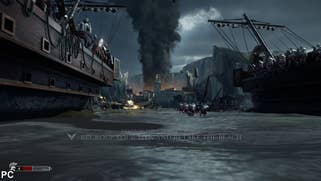

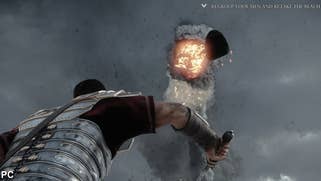
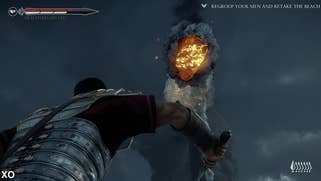





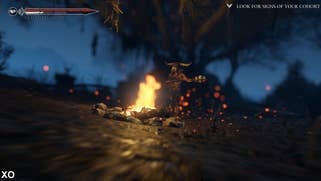
Ryse offers three selectable graphics presets and an advanced menu allowing for further customisation. At this point we should keep in mind that Ryse was developed originally for a closed platform, with initial statements from Crytek even suggesting that the game would never see release on the PC. As a result it's clear that the game was not designed with scalability in mind to the same degree as its predecessor, Crysis 3. The difference between the low and high settings appears strikingly minor at a glance, while the difference between normal and high is subtle to the point that it's nearly undetectable without close examination. The focus here appears to be on getting the most out of existing assets through increased precision and less aggressive LOD (level of detail) management.
The LOD system has been much improved at higher settings, allowing for more detailed models viewable at a greater distance compared to Xbox One. The ship sequence early on, for instance, features a huge selection of troops jumping into the water. Looking closely, however, we can see that each of those troops is fully detailed on the PC; many of the more subtle flourishes are stripped away on Xbox One while background detail is completely missing as well. On the whole, the LOD transitions are less aggressive when using the highest settings while the normal setting appears more in line with the Xbox One release and low is a step further back. The low setting also impacts the appearance of cloth materials on soldiers and how it interacts with the model.
Shadows see a small boost in quality as well. Using the high setting, we noted higher-resolution shadows drawn at a greater distance with smoother transitions between levels. Additionally, at close proximity, Marius himself benefits from superior shadow coverage on his armour with each and every piece casting an appropriate shadow on his model. On top of that, both the Xbox One and PC versions of Ryse make use of SSDO (screen space directional occlusion). SSDO helps approximate global illumination by taking into account the direction, intensity and colour information of the surrounding lights. This is particularly useful in Ryse, which makes heavy use of scenes with softer, ambient lighting where more traditional shadows would appear unnatural. Applying colour information to its contact shadow allows for the surrounding materials to more realistically shadow the world around it. The lighting and shadow work in Ryse stands as one of the most impressive examples of real-time rendering we've seen to date.

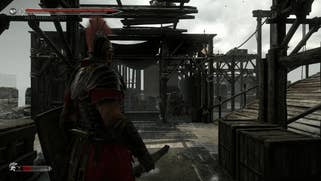

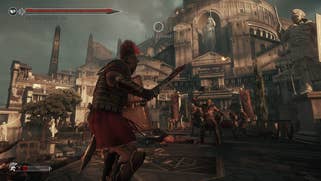


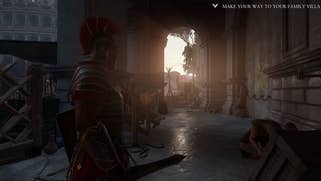
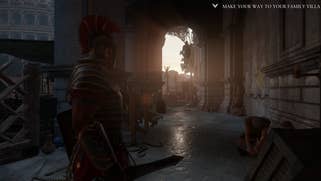

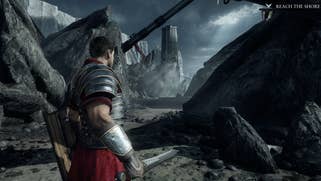
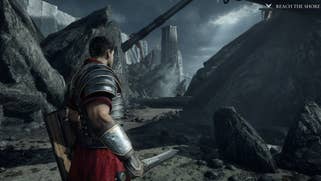
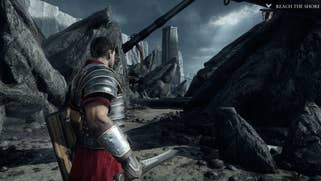
Then there is a matter of textures. By default the game automatically determines the texture quality based on the available VRAM on your GPU. In the preview build, settings ranged from low to high but the final code has changed with settings ranging from low through to very high. GPUs sporting 3GB of memory or more default to the very high preset while 2GB cards are limited to high, 1.5GB cards limited to medium and 1GB cards access poverty-spec low-quality art. The game automatically selects the appropriate option and, by default, does not allow the user to adjust this setting.
Further testing reveals that perhaps the reason is due to the way the game actually handles its textures. Rather than simply reduce the quality of textures across the board, Ryse appears to adjust texture resolution on a per-scene, per-object basis - perhaps even dynamically - based on the amount of VRAM available. The main character's armour may appear identical between low and very high in one scene while another area might show a dramatic loss in quality on the low side.
In that sense, there's no clear, revelatory improvement over the assets already present on Xbox One when looking at the two side-by-side. Close examination of Marius' armour reveals a slight boost in detail in spots but, in many cases, it's simply the lower resolution on Xbox One obscuring detail that was already present. Perhaps on PC, at very high, the game simply uses the highest resolution textures at all times. Monitoring VRAM usage while the game is running does show usage generally sticks very close to 3GB on our GTX 780.


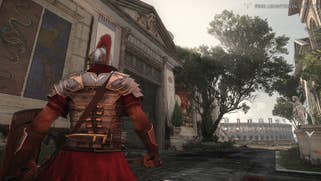
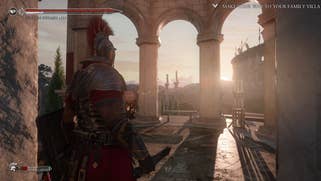

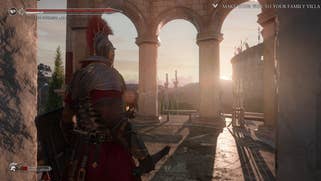
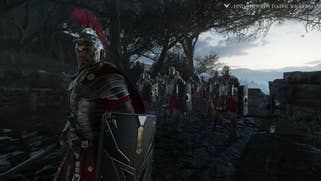
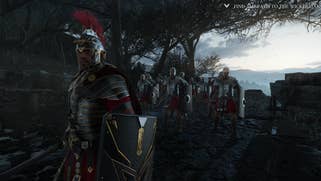

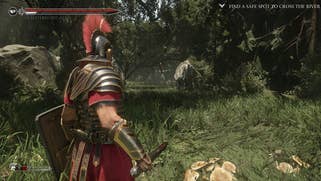
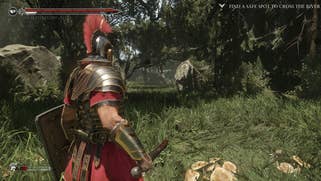
Unsurprisingly, Ryse is a demanding game, pushing GPU usage pretty heavily at its highest settings. Crytek has been careful to note that 30fps is its target when aiming for 4K/2160p resolutions and our experience with the game supports this, but it's actually quite playable at this frame-rate. We tested the game at a variety of settings and determined that the GPU is the limiting factor here as frame-rates soar by lowering resolution. Actual presets had minimal impact on performance on the GTX 780.
Using a single GTX 780 with resolution set to 1080p with the high preset, the game does a good job of hitting 60fps at nearly all times but it's not 100 per cent stable. Using the game's internal scaler to lower resolution by 10 per cent, however, was enough to eliminate the dips we encountered, producing a constant 60fps throughout testing. Image quality is still sharper than on Xbox One but the massive boost in performance makes for a much more attractive game. On the flipside, if you're not bothered by capping frame-rate at 30fps, you can increase image quality pretty significantly using SSAA or simply boosting resolution while still enjoying faster performance than Xbox One, which suffers from regular dips below 30fps.
We also tested the game using a 1GB Radeon HD 7770 coupled with an i5 3570K at stock speeds. The results were impressive, to say the least. Textures took a hit, as expected, but not to the point that surface detail was completely destroyed. It's only when textures are within close proximity to the camera that the loss of detail becomes painfully evident. We were able to run at 1080p with normal settings and achieve a fairly stable 30fps. Unlocking the frame-rate didn't buy back much in the way of performance, however, with an average hanging around 34fps. There are still plenty of 1GB cards out there today, so it's nice to see that the game still scales fairly well with less powerful hardware. A machine such as this should be able to deliver an experience reasonably close to Xbox One - minus some texture detail, of course.
We also took a look at the game running on an overclocked i7, coupled with a Radeon R9 280 - the cheapest enthusiast-level GPU with 3GB of RAM available (now a ridiculously cheap £130 on Amazon), along with a 4GB Radeon R9 290 - a card that's starting to see its price plummet owing to the arrival of the immense GTX 970. And finally, we tried the GTX 980 - the fastest single-chip GPU on the planet. We wanted to match gameplay frame-rates to the standard 1080p, 60Hz display used by the vast majority of the PC gaming userbase (according to the Steam hardware survey) - and the video above reveals the results.
Ryse is a story-driven game and, as with the original release, we were disappointed by the heavy reliance on pre-rendered video files used to present the narrative. The videos utilise the same resolution (1600x900) presented on Xbox One and suffer from noticeable compression artifacts. When contrasted against the real-time visuals these scenes stick out like a sore thumb, especially against the pristine nature of the PC's presentation. These scenes are generally used to mask loading scenes and we noted instances of dropped frames during this process.
Thankfully, this can be mitigated by utilising an SSD, which helps to smooth out skips and massively decrease loading times. When installed to a standard 7200rpm mechanical drive, loading times ranged from 40-50 seconds while installing to a 480GB SSD shortened loading times to a more manageable 10-12 seconds. In comparison, the Xbox One version requires a good 50-55 seconds when loading the same areas. Also, we commend Crytek for the incredibly rapid start-up sequence. No animated logos, no middleware videos, just a quick legal screen and you're dropped straight to the main menu.
Another important aspect of any PC port is the control system. Crucially, Ryse handles just as well with the mouse and keyboard as a standard controller. In fact, it's rather surprising just how nice the game feels with a mouse and keyboard. Third-person action games such as this typically translate poorly to such a setup, but Ryse feels great using standard PC controls. It's not possible to re-map the controls from within the game, though it's likely possible externally, but it doesn't feel necessary as the defaults work very well.
Almost one year on from its original release Ryse still stands as one of the most visually impressive games on the market. The quality of the materials, lighting, and post-processing is remarkable and it comes close to achieving the pre-rendered look Crytek is clearly striving for. Indeed, Ryse just might be the most impressive-looking game available today on the PC.
It's an impressive effort, due in no small part to the excellent CryEngine powering the game. It's a demanding release with plenty of room to grow but it runs very well on hardware available now while scaling down to lower-end machines pretty smoothly. Compared to Dead Rising 3, this is something of a revelation and a very skilled porting effort on the part of Crytek - with the quality of its visuals and its high system requirements for the absolute top-end experience, it seems likely that Ryse will become a new benchmark for those looking to test the limits of their high-end PC hardware.


















